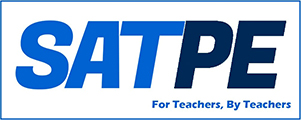Dr Joe Cowley
An evidence based reflection formed as part of a doctorate thesis which focussed on barriers to PEPAS in the Scottish curriculum.
Recent initiatives aimed at making children physically active during class time such as the Daily Mile and more recently strength and conditioning based exercise programmes for primary children have received great media attention and are being touted as the answer to the obesity crisis (Collins,2018).
As professionals we must ask, are specific, individual activities going to solve this issue? Sure, randomised, controlled trials may show improvements in body composition and short term fitness gains, but this does not mean that these programme extrapolate across the school population nor indeed be conducive to physical literacy. The solution to the activity crisis lies in building physical literacy through confidence and competence to move (Giblin, Collins and Button, 2014). Too many times physical education is seen as an add on, a treat for behaving, or even worse ‘McCrone time to allow the kids to run around and be active’, whilst the class teacher does their planning.
During the period of working on my Doctorate, I had a part time role teaching PE in primary schools. Personal observations here confirmed what some of the literature has previously stated. Specifically, that there is a distinct bias solely in “getting them active” or, as previously noted, there is an overemphasis on “the here and now” of physical activity (Kirk, 2013). Importantly, available evidence clearly suggests that this is the most critical phase for establishing physical literacy.
On several occasions, I had tried to meet with class teachers to share aspects of learning covered with their class, only to be met with the phrase “oh well, they are hot and breathing hard, so you have done your job”.
PE is still perceived by some as an outdated form of sport-specific technical training, typically taught in blocks of activities. My personal observations suggest that this perception remains common, particularly in the primary sector. Additionally, on many occasions, I observed PE being ‘taught’ by young coaches from local colleges, despite their lack of appropriate training.
The importance of laying the foundations for movement at the primary stage impelled me to change the way I taught PE, and I began moving away from traditional blocks of activities and towards more contemporary pedagogical models. For example, I implemented the use of the co-operative learning model, whilst teaching athletics with a Primary 7 class. This class historically had a high number of unwilling participants and competent bystanders. Subsequently I designed a series of contemporary lessons which endeavoured to include a more cooperative learning approach, rather than traditional cross-country lessons. Accordingly, I used a recreational park away from the school environment and marked out a time trial course. The children were allocated to groups following the guidelines outlined by Casey and Dyson (2016). Within each group we had timers, coaches filming the participants and noting the times and observing technique. By the end of the series of co-operative lessons, all the children, not just the high performers, were willing to run and have a go.
My observation was that pupils who had been previously unwilling to participate in running during PE, increased their willingness to participate. This, when contextualised against the literature, is presumably a consequence of being afforded greater autonomy, relatedness and feeling more competent. Furthermore, the pupils felt they were not being judged in large groups, in front of the whole class. The take home message here is that pupils must feel that they are in a safe, supported space with a level of autonomy in their learning activities from an early age.
Dr Joe Cowley is a lecturer on the PE ITE degree at the University of Stirling.
His profile and links to Linkedin and Twitter are available here:
https://www.stir.ac.uk/people/943612vv
